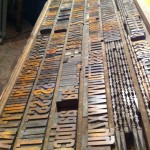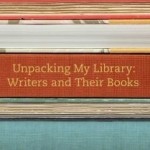The commerce of literature, the literature of commerce: Anglo-French perspectives in the long eighteenth century
What role does literature play in commercial society? To what extent can literature resist or even counter market forces? In what ways does commercial society use the book trade to promote its own system of values? This conference proposes to illuminate the ongoing debates regarding the place of literature within commercial society – topics that have long exercised many working in the arts and humanities on both sides of the Atlantic – from a historical perspective, focusing on the long eighteenth century.
Eighteenth-century writers were acutely aware of living in an age in which social and international relationships were being rapidly reshaped by commercial forces. The world of letters played a crucial role in helping to assimilate, explore and influence this changing world: from histories of civil society to economic philosophy, merchant handbooks and, last but by no means least influential, imaginative literary genres, most notably the emerging modern novel. The eighteenth century was also a period, in which the world of letters itself was dramatically reorganized by these same commercial pressures and interests, bearing witness to the rise of the professional author and the rapid expansion of the book trade across European boundaries and across the seas. It is thus unsurprising that the objects of this growing international trade – the books and pamphlets – should reflect not only on commercial society in general but also on the economics of writing more specifically. While these were developments that were associated with an increasingly global commerce, France and England were key players. Furthermore, their books on trade and their mutual trade in books shows clearly the extent to which these two European powers each singled out the other for particular attention, motivated by conflicting sentiments of admiration, hostility and rivalry.
The conference organizers invite papers that explore from any of the above perspectives the interactions between commerce and literature across the long eighteenth century, in England and/or France and their respective colonies. Comparative studies are particularly welcome. Possible topics might include:
– the book trade: in what ways was the book trade integral to commercial society, offering a vital conduit for the commerce of ideas, including ideas on trade, that in turn fostered networks and attitudes conducive to finance and trade? What impact did the commerce of literature have on the national economy?
– the diverse literatures of commerce and their interactions: merchant handbooks, histories of civil society, economic philosophy, pamphlets…
– reflections on commerce within imaginative literature: what roles are played by plays, poetry, the novel in assimilating, promoting or contesting commercial society? in shaping the profile of the professional author? how are these imaginative genres shaped by market forces?
– Anglo-French connections: trading contacts, commercial and financial rivalries, practices of emulation…
Proposals of no more than 500 words should be submitted to c18anglo.french@gmail.com and the deadline for submissions is 16 April 2012. Prospective participants may wish to contact the organisers to register interest before submitting a full proposal.
Dates: Monday 2nd July – Tuesday 3rd July 2012.
Conference Organisers: D’Maris Coffman and Jenny Mander
Venue: Centre for Financial History, Newnham College, Cambridge
Deadlines: call for papers: 16 April 2012; registration: 15 June 2012
Sponsored by the Newnham College Senior Members Research Fund, the Centre for Financial History, the Trevelyan Fund of the History Faculty and the French Department at the University of Cambridge.



